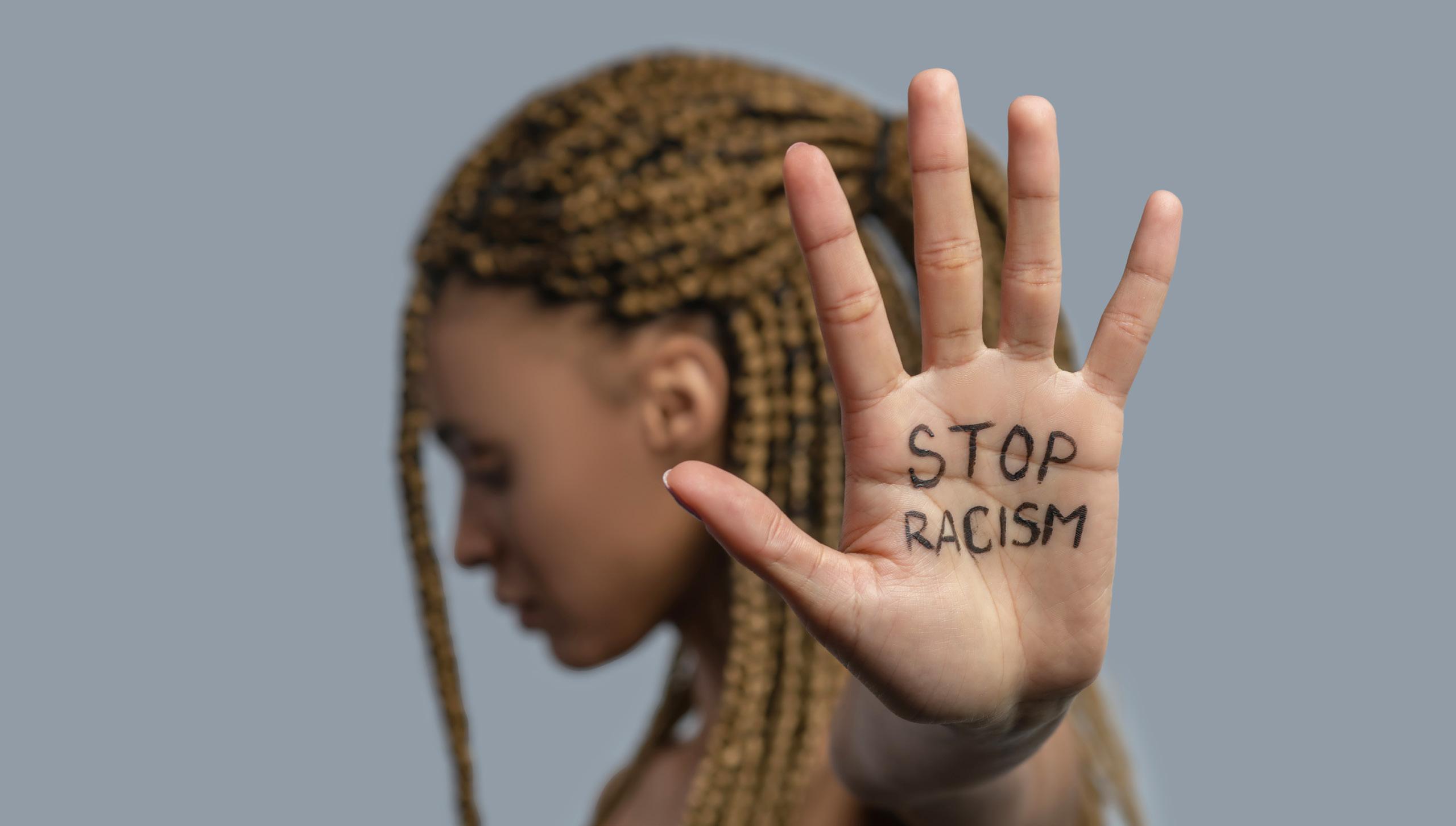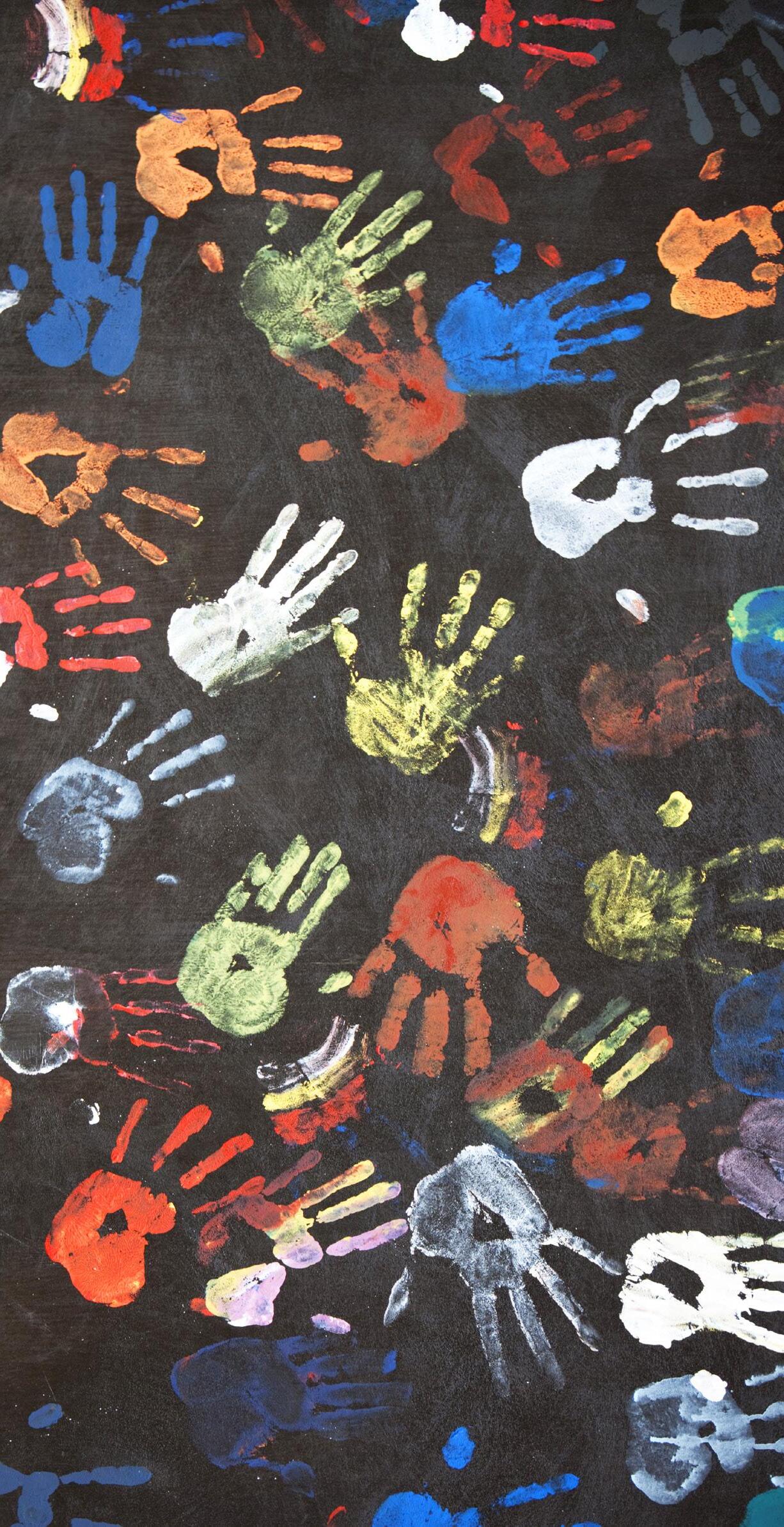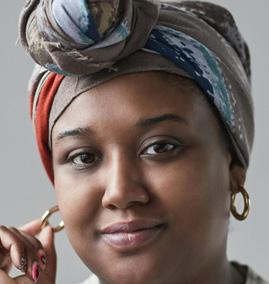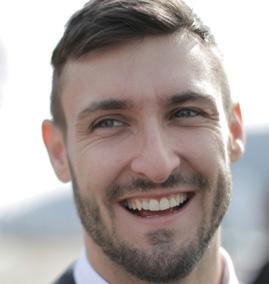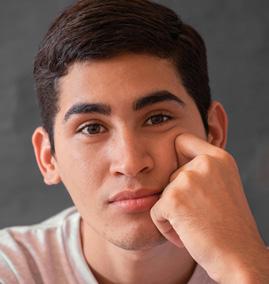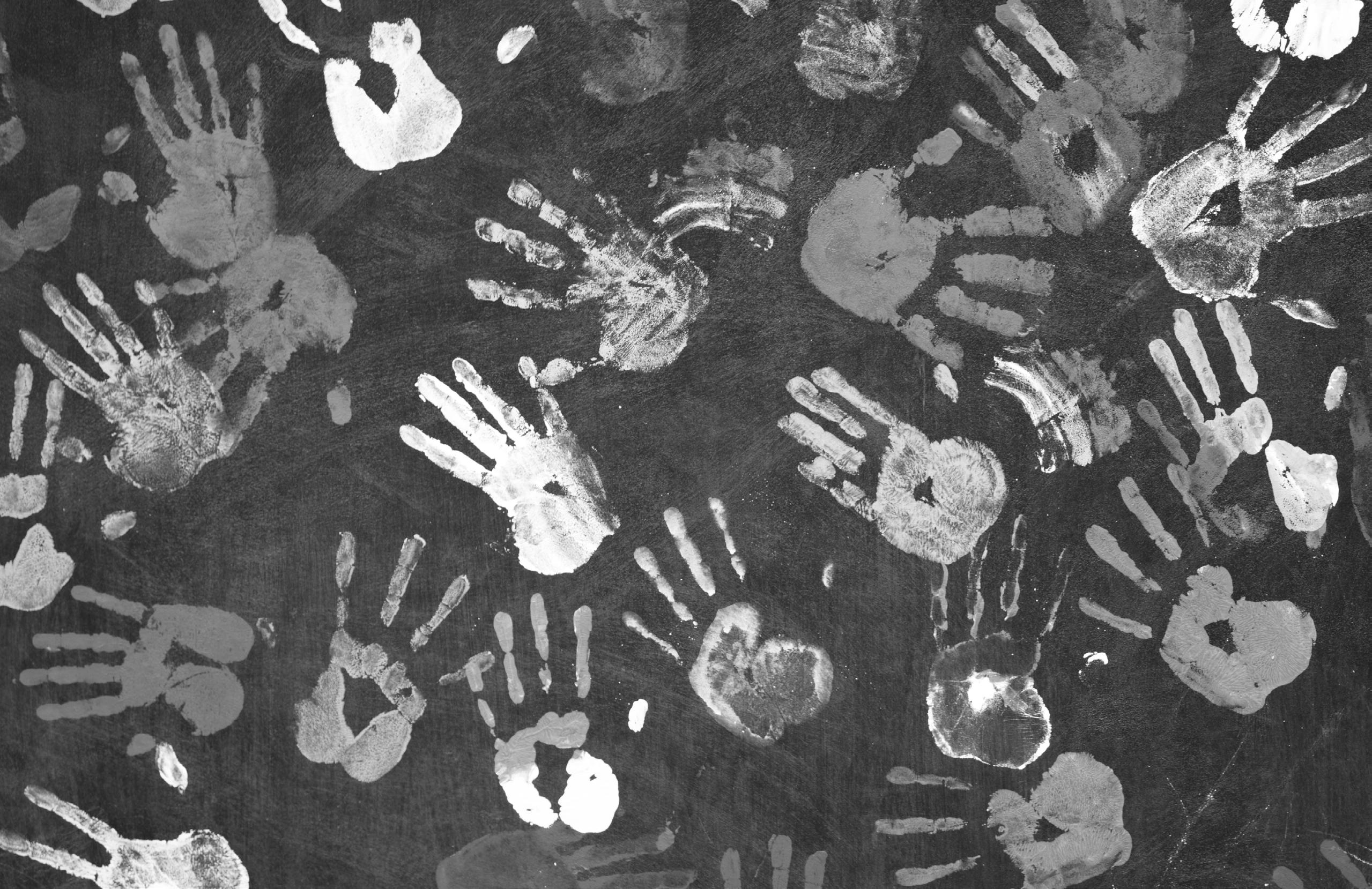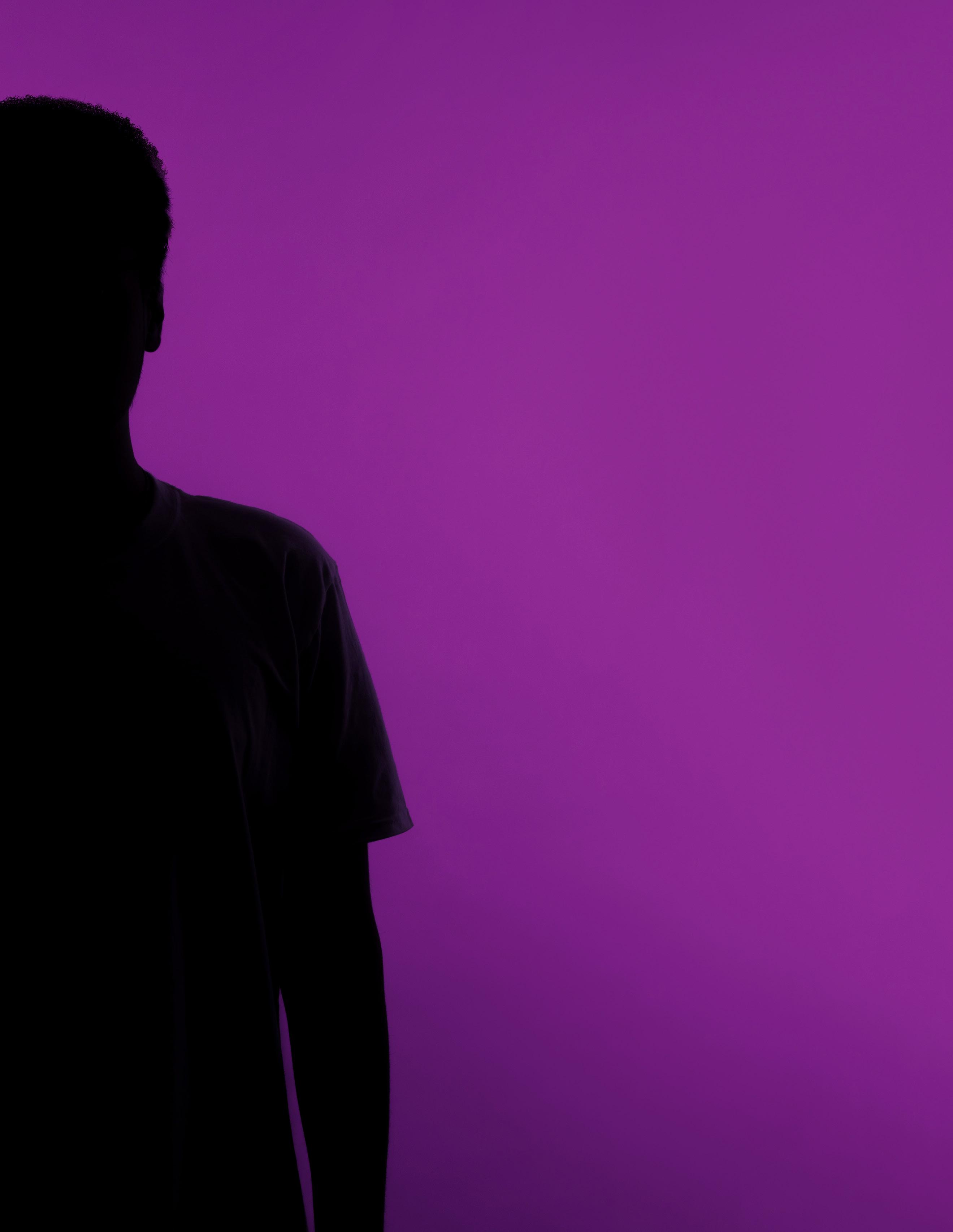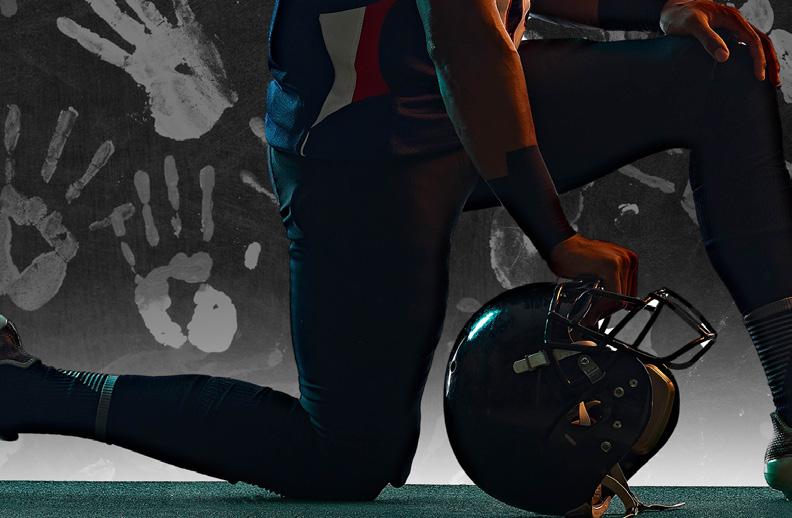1. Action Plan for Advancing Justice and Equality
The Action Plan only applies to Black employees – how is this justice and equality for all?
TogetherBeyond Leadership responded:
The Action Plan is an example of one small group of employees gathering in the aftermath of the horrible things they witnessed, including the killings of Americans like George Floyd, Breonna Taylor, and others. Those incidents – coupled with peaceful protests around these occurrences within American cities and across the globe – led to some powerful Harambee-hosted "Courageous Conversations" that further inspired members of the group to action.
This small group turned into a larger, incredibly diverse group of employees that developed the three priorities within the Action Plan they thought would benefit Black employees. These priorities also aimed to benefit the Black community at-large to help put more Black candidates in the pipeline for careers in STEM fields.
Statistics show that Black people are an underrepresented minority at all levels of our company. The employees who developed the Action Plan’s priorities wanted to address that. It should be noted that the Action Plan calls for more training and mentoring that will also benefit the broader population.
What also needs to be kept in mind is that the Action Plan in no way cancels or replaces any elements of our TogetherBeyond I&D Strategy that has been ongoing since its inception. It is in addition to all that is within our inclusion and diversity strategy. To become a "company like no other", we must fully embrace all our differences and include them in our business and growth strategies. This will allow us to live up to our core value of "Living Inclusion".
It’s time to remove barriers within our offices and operations that keep all of our people from reaching their full potential, which is what TogetherBeyond is all about. The Action Plan is one element of it moving forward. We are concurrently moving forward to make sure all employees and people leaders are better trained in the principles of inclusive leadership, to identify unconscious bias, and to be better allies.
Whether you identify as a ''non-white/other minorities'' person, Black female, white male, Asian transgender, white female, Afro-Caribbean Veteran male, vision impaired member of the LGBTQI+ community, or any category you happen to identify yourself as – all of us must be engaged in this business every day.
With respect to the Action Plan - why are we focusing on race rather than merits, talent, and capability?
Let us remember that the Action Plan is one element of global inclusion and diversity strategy - focused on robust engagement, empowerment, and promotion of ALL employees, based on merit.
In one employee’s words:
Merit is mentioned as a primary consideration. To ignore race though would miss the point completely... There are numerous people volunteering in communities every day, including myself. I get that some are weary about the introduction of race into the conversation because it is easier to close your eyes and say it doesn't exist, but true change is when we put all the cards on the table and focus on the most troubling ones.
Does the Action Plan exclude other non-Black minorities?
No, it does not exclude other non-Black minorities. Just because other groups are not mentioned by name does not mean they are not included.
Commitment 1 (Amplify culture of belonging) includes multiple elements promoting equity internally for all. Commitment 2 (Recruit, retain, and advance Black employees based on merit) does focus on uplifting Black people, but also does not leave people behind. In particular, the third item of Commitment 2 requires senior leaders to sponsor and mentor not one, but two diverse employees – one Black. The intent (and the corresponding accountability focus) is that the other mentee must be of a different race, gender, sexual orientation, or physical/neurocognitive ability. Commitment 3 goes a step further by engaging in initiatives where two of its three items are aimed at uplifting all minority groups.
The Action Plan is also just one part of the TogetherBeyond strategy. The TogetherBeyond team is working with business leaders in countries outside of the US to adapt the principles within the Action Plan to uplift underrepresented minorities within those countries.
Are we promoting Black personnel at the detriment of other personnel who may be just as qualified or more qualified?
Short answer – no. Long answer – We are committed to hiring the most qualified candidate for the job. The actual problem is when leaders falsely claim there are not enough qualified Black people, like when the CEO of Wells Fargo initially blamed a “limited talent pool” for lack of employee diversity. In nearly every field, Black people excel. Under the Action Plan, We commit to taking the time to identify highly qualified Black individuals precisely to avoid this common industry excuse.
This is political, so why are we doing this as a company and in the workplace? It’s not political – it’s the right thing to do as compassionate individuals, and it’s good business! Advancing equity is necessary to grow a company and a workplace where all people can thrive. Building equity includes tackling the generational wealth gap experienced by Black people and creating work environments where Black people can bring their whole selves to work. Not only will these initiatives make us an employer of choice, but there is clear research that companies with diverse management teams and workforces outperform less diverse peers.
Is it legal for us to exclude other employees by focusing on Black employees?
Employee Response 1: A Personal Reaction
I don't think the new plan is saying we are excluding other people (i.e. that it won't recruit, retain, and advance nonBlack employees). I understand it to say that if we, or any organization, commits to being diverse and inclusive, it needs to recognize that Black and other non-white employees have not had as many opportunities as white employees. Therefore, the company needs to focus more effort on ensuring opportunities for non-white employees, increasing representation of Black employees and providing more leadership development for Black employees as stated in the plan.
If I was in a minority group who had been treated unfairly in many aspects of life, I would feel like a policy which only calls for equal opportunities for everyone would just be taking us back to square one. Non-white people have lived with such policies and heard these words a million times but have not seen these policies actually applied to them. Yes, there should be equal opportunities for everyone. But until those who have historically not had equal opportunities are given additional focus, I don't feel like we can honestly say that we're giving equal opportunities to everyone.
Employee Response 2: A Perspective from Court Cases
Consider the US Supreme Court’s majority decisions regarding Affirmative Action policies which are in step with the meaning behind the Action Plan and why it is needed.
µ This link summarizes a timeline of Affirmative Action cases
µ Note the 2003 US Supreme Court case of Grutter v. Bollinger: Barbara Grutter, a white woman who was denied admission to the University of Michigan Law School, said the school had used race as a predominant factor for admitting students. When the case reached the Supreme Court, a 5-4 opinion led by Justice Sandra Day O’Connor upheld the 1978 Bakke decision which had prohibited racial quotas but did allow race to be one of many deciding factors in admissions or hiring. The Court ruled that each admissions decision is based on multiple factors, and that the school could fairly use race as one of them. The case reaffirmed the court’s position that diversity on campus is a compelling state interest. "The race-conscious admissions program in use at the time of petitioner's application is lawful under the Equal Protection Clause."
µ This link summarizes a second case at the University of Texas where Affirmative Action was also upheld.
The race-conscious admissions program in use at the time of petitioner's application is lawful under the Equal Protection Clause.
– US Supreme Court, Grutter v. Bollinger
Becoming Better Allies
I can’t keep up with the latest politically correct terms to use, so I just don’t say anything – why should I talk about this with anyone?
Don't let your hesitation hold you back from entering into a discussion—'get comfortable being uncomfortable'. Talking allows different viewpoints to be heard, so be curious! Ask questions, as it may allow you to have a unifying idea with those you're speaking with. Also remember if you do make a mistake and someone identifies it, acknowledge that you used the wrong term or word, don't make it about you and make it a learning moment. Realize that your experiences are not everyone else's and that hearing their views may help give you a more rounded world view.
If you don't acknowledge problems (such as those identified by labels or terms) you run the risk of never talking about the issues at all. Talking, and more importantly listening, allows us to build empathy, trust, and relationships.
What do you say to someone who just doesn’t see that there’s a race problem in society?
Good question! Some of us were once there when we started on our journey to Allyship. Sometimes it takes compassionate engagement - finding the right metaphor or the right story to bring to light how interwoven systemic racism is in our society.
Take a look at our FAQ section - Anti-Blackness and Racism in our Societies – Still Here. Maybe one of the examples will resonate when you talk to that person. 2.
There’s no changing the mind of a racist person spouting hateful racist speech in a public setting (like in a crowd or on a bus) so why should I put forth the effort to go up and talk to them?
Sometimes it's more about how the experience affects you and everyone else on the bus or in the crowd than it is about changing the mind of that person. Other times, it’s about rehumanizing both that person and ourselves. In the moment, we cannot assume other people (including authority figures) will intervene, so it's on us to develop the courage.
Speaking up is a way to honor your principles, interrupt the bystander effect, and plant a seed to avoid passively enabling negative behaviours and points of view. Little actions like these can cause a ripple effect, helping us to be active accomplices, not passive allies.
Some things to consider before engaging:
µ Is it safe for you to engage?
Is this person mentally distressed?
µ Is this person actively threatening someone or making other people visibly uncomfortable?
µ Can you tell what is motivating this person, if they are having a really bad day or if something else is going on – something that you could use to re-humanize and connect with them?
µ If you were to intervene, could you deescalate the situation safely and compassionately based on your privilege (e.g. if you are tall or white or confident in such a way that you could use your privilege to change the situation)?
µ If you do not feel individually safe, could you engage the other people with "Do you believe in that? I don't."?
If you decide to engage, consider responding compassionately in a way that could interrupt their narrative while opening a line of communication. Some examples:
µ Wow, you’re really passionate about this”
µ “I hear you”
µ “I’m listening”
µ “I’m curious”
Followed by:
µ “Why do you feel this way?”
µ “Did something happen to you?”
Or even possibly:
µ “Hey, you seem a bit distressed. Everything ok?”
Anti-Blackness and Racism in Our Societies - Still Here
Isn’t this just a United States problem? I don’t live or work in the US so how does this affect me?
Much of the information presented in this document is written from a US social and historical perspective. At the same time, anti-Black racism is a global phenomenon and an issue in multiple geographies outside the US.
Negative stereotypes of Black people as criminal and dangerous are unfortunately deeply ingrained into global mass media and popular culture. This stereotype does real damage to how Black people all over the world are perceived, regarded with suspicion, and (mis)treated by their fellow citizens, even outside the US.
Just as the US accrued part of its foundational national wealth from slave labor, several European nations have accrued part of their wealth from colonization of African societies as well as participation in the Trans-Atlantic slave trade. Aside from wealth, European colonization has also affected many of today’s African social systems, such as inequal distribution of land ownership. Other countries outside of the US and Europe suffer from stereotypes about Black people, whether stemming from the unique mix of their own cultural history or the influences of European colonization. It is not just a US problem.
The below provides some additional links and resources on this issue:
2020 Medium post about a woman’s personal experience discovering that her boyfriend’s French parents were white supremacists.
2018 BBC article on race relations in South Africa, where a reported 67% of farmland is still white-owned, Black African and mixed-race South Africans experience the highest rates of poverty, and racial violence still occurs.
2020 CNN article about the recent racial history of Chinese toward Africans, after reports of mistreatment of Africans in China during COVID.
2020 NY Times opinion article about racial tension in South America. One of the statistics that stood out – over 75% of people killed by police in Brazil are Black.
2020 LA Times article on race relations in the Middle East – for example, the term 'abed' is cited as being commonly used in Libya for Black people, even though it means slave.
“ “
It can be easy to think of racism as a U.S. problem, but don’t be fooled. While there is a specific context and way in which racism shows up in the United States, racism is a global problem with global roots…manifesting as color blindness, xenophobia, or brutal racism – be it in South Africa, Europe, Australia, or India.
– Nikhil Bumb, Chris Carlson, and Lakshmi Iyer Change the World for Whom
Why are we still focusing on this? Civil rights happened in the ‘60s and ‘70s.
Employee Response 1: A Look at Today’s Systems
The Civil Rights movement effectively ended many of the overtly racist policies and institutions we reference today; legislation like the Civil Rights Act of 1964, Fair Housing Act, and Voting Rights Act were all passed in an attempt to dismantle existing racial barriers. However, they did not end systemic and structural racism in our society.
Policies and practices still exist today, such as de facto redlining, which disproportionately affect Black communities by allowing lenders the ability to deny or restrict home loans, insurance, and other services based on the racial demographics and socioeconomic status of certain community locations; or disparate medical treatment based on false notions of Black patients’ physical pain thresholds. These are just two examples of a number of policies that systemically (and legally) discriminate against the Black community.
However, it's important to note that systemic racism isn't found only within government – it's also present in our everyday lives. White privilege – which fuels microaggressions such as tone policing, put-downs, or lack of cultural acknowledgment – contributes to daily inequality. Alarmingly, these microaggressions might not even be seen as implicitly racist by the speaker. Today's movement is geared toward eliminating this systemic racism that still exists – both on a national and personal level.
Employee Response 2: Focus on Incarceration
The Voting Rights Act has been weakened, and Black voter suppression persists. The legacy of redlining and persistent housing segregation also still lead to school segregation and very unequal distribution of resources.
The crimes of slavery and racism continued past the 1970s. For example, Black Americans have been preferentially arrested and incarcerated in the US, and in many states, incarcerated people have been stripped of their voting rights, as documented in this Netflix film about slavery, incarceration, and voting rights:13th
Why are non-Black people, even other minorities, assumed to be “racially privileged”?
First, let’s highlight how divisive this statement is (whether by intent or not). Saying that Black people are suffering does not negate the statement that other groups also suffer.
Second, this statement does not acknowledge how incredibly diverse Black people are. Black people are sometimes part of several other marginalized groups and can experience compounded impacts. Black people are part of Indigenous, Latinx, and Asian groups, too.
Third, we need to embrace complexity and intersectionality - it is possible to both experience discrimination and still be privileged. Cathy Park Hong published “Minor Feelings: An Asian American Reckoning” in February 2020, a collection of essays that dives into the messy Asian American experience and still comes out with the conclusion that we all need to stand in solidarity with Black people. This op-ed by Jeff Yang says it well: minorities outside the Black community cannot stay silent and cling to statements like “but we’re not racially privileged” when we still have systems in place that result in discrimination against Black people.
I don’t see the problem anymore. There are tons of famous Black people like Oprah Winfrey. Just like any other person has to do, she worked hard and got to where she was today.
The bootstrap myth claiming that upward mobility relies solely on individual effort and merit is one of the United States' most misleading ideas – particularly damaging when considering how Black people are still disproportionately affected by systemic racism. The folks at How Stuff Works authored a great piece on this in 2017.
Individual success is not the same as availability of opportunity and trends for a group of people. Looking at generational wealth in the US is a great example –Black people have a fraction of the generational wealth of other groups due to historical events such as slavery, loss of accrued property during Jim Crow, continued discrimination in hiring practices and real estate, and higher rates of incarceration.
The links below detail this generational wealth gap. Even though individuals may be able to "make it", the goal should be uplifting everyone.
Feb 2020 article on generational wealth
Ted Talks Daily (Sept 24, 2020): Hasan Kwame Jeffries: Why we must confront the painful parts of US histor y
My ancestors didn’t own slaves, so what does this have to do with me?
Response from a second-generation employee whose parent immigrated to the US: Slavery is not the definitive threshold of whether racism still exists. Racism in the US didn't end when slavery became outlawed. For example, sharecropping and Jim Crow laws functioned in the South to continue to deny Black people equal opportunity, while in the North (as in the South), there was discrimination against the Black community in housing, employment, and education, exemplified by 'redlining'. These historical effects continue into present day racial inequalities, not to mention ongoing problems like racial profiling by police, employers (discriminating against job applicants with names that sound 'Black'), and lenders who charge higher interest rates to Black people compared to non-Black people with the same credit score.
Moreover, a substantial portion of US national wealth was built off slave labor. It was not just southern states that benefited; related non-cotton industries, such as banking, also reaped benefits. This is a legacy every American - native born or immigrant - inherits. Some immigrants (like in my family) may bristle at this notion, having an obvious claim to ancestors that didn't own slaves in US. However, while certainly facing their own struggles when coming to US, immigrants are voluntarily joining a country where the system, and thus distribution of wealth and power, has racism embedded into it. Racism in America affects all members of society. Note that in many cases newcomers have gotten access to opportunity much sooner than Black people who have been here for generations (e.g., New Deal home loan support, access to GI bill benefits, or access to higher education).
Isn’t redlining a thing of the past? Why are we still talking about it?’
It is true that overtly racist policies, like redlining and racial restrictive covenants, are no longer legal, but their legacy continues. Before being banned in 1968, African American and Mexican American neighborhoods were marked as "red" areas with the highest lending risk. These populations, who already lived in segregated neighborhoods, were denied access to mortgage loans (and ability to build generational wealth) that were provided to European Americans who eventually moved out of the cities to establish new suburbs, protecting their wealth and children's educational opportunity. Brown v. Board (1954) hastened this process by encouraging more European Americans to migrate to the suburbs. This white flight quickly impoverished urban centers as the tax base of inner cities, further widening the gap between affluent suburban European Americans and impoverishing inner cities. The Fair Housing Act, part of Title VIII of the Civil Rights Act of 1968 and the Equal Credit Opportunity Act (1974) pushed back on redlining as a legitimate practice.
As reports show, the impact of redlining remains evident in the wealth gaps between America's segregated inner city and suburban communities. Why?
In the US, wealth and financial stability are linked to housing opportunity and homeownership. The largest share of most family wealth comes from homeownership and home equity. The US Federal Reserve reported in 2020 that median net worth for an African American family is $24,100, and for a Latinx family is $36,100, compared to $188,200 for a white family.
When lenders consider borrowers' credit history and overall debt-to-income ratio, it explains how a "blind" review of a customer's credit profile would result in disproportionate lending outcomes. The current credit scoring model does not consider consumer data on rent, utility, and cellular bill payments; this exclusion disproportionately hurts African Americans, Latinx, and young people who are otherwise creditworthy. Auto and mortgage loan studies indicate that discretionary markups made by lenders (agents' commission being tied to profitable markups), have resulted in African Americans paying nearly twice the markup white people did. "White people have better numbers" because their generational wealth protects them from missed payments during financial stress. Alternatively, people of color have been disproportionately targeted for high-cost, predatory loans and intrinsically risky financial products that predictably lead to higher delinquency and default rates. As a consequence, Black and Latinx people are more likely than their white counterparts to have damaged credit.
More information on the disproportionate effect on credit scoring can be found here.
Why am I being asked to “check my privilege”?
Employee Response 1: Acting with Mindfulness
Ijeoma Oluo defines privilege as an unearned advantage. When asked to "check your privilege," you are being asked to think about the way you come into a conversation informed by how you move in society, and what unearned advantages have shaped how you interact with the world around you.
Employee Response 2: What Is the Privilege?
White people in America:
µ Do not get racially profiled when entering an all-white neighborhood, shopping at an expensive store, or driving an expensive car.
µ Do not have to teach their children how to interact with police so their children can return home safely.
µ Were never considered to be only 3/5 of a human being.
When someone selectively quotes Dr. King about race to deny that racism exists, or says that "all lives matter", or can only perceive that Blacks are getting preferential treatment, it signals a discomfort with seeing minorities advance.
Black Lives Matter (BLM) is here to shine the light on the systemic racism that is manifest in so many facets of American society including racial disparities in wealth, housing conditions, incarceration, police interactions, access to health care, access to qualit y public education, voting rights, access to job opportunities, and discriminatory hiring practices and lending practices.
Editors’ note: See section on Community Safety for more questions on Black Lives Matter and how to respond to “all lives matter”.
“ “
Your privilege has power. And that power is being put to work whether you are intentional about how to use your privilege or not. Use your privilege for the greater good, rather than to just advance your good.
– Sonia Thompson What To Do With Your Privilege
Why should I be held responsible for the high proportion of single parent families in the Black community – isn’t that the main reason they have higher poverty rates?
The premise of this question is entangled with politically expedient caricatures of the ‘welfare queen’ and ‘absent Black fathers’ – damaging distortions which perpetuate anti-Black racism. In fact, a 2013 CDC study found that Black fathers are the most involved fathers of all race and ethnic groups.
The current landscape of our societies is dependent largely on our history. In the US, it’s critical to understand the history of redlining and mass incarceration which have been systemically used as tools to maintain white privilege – tools which are even being used today (see other FAQs within section for more on redlining).
In addition to this, mass incarceration is a significant contributing factor of the high proportion of single-parent families in the Black community. In the US, the 1980s War on Drugs disproportionately affected (and is still affecting) Black communities, despite the fact that drug use and related crimes are statistically proportionate among all races. This war has led to an epidemic of mass incarceration that contributes to higher rates of single- parent families.
As a final note, it’s critical to understand that impoverished communities, regardless of racial diversity in that community, statistically have higher rates of violence. You can help create positive changes to promote community investment and fight mass incarceration inequalities by participating in your local elections, supporting Black businesses, and advocating for Black communities to have equal access to educational and economic opportunities within your personal network.
4. Affirmative Action and the Myth of a “Colorblind” Society
Shouldn’t we ignore race if we want to end racism?
To ignore race is to ignore the problems of systemic racism. We must take into account what part a person's name, skin color, and background plays in them getting a job, getting pulled over by the police, or buying a house. We must use race when studying statistics to determine where specific groups have advantages or disadvantages, showing which parts of the system needs fixing. This article discusses how being a poor white person is different than being a poor Black person.
While it's great to look at an individual and see their personality, their interests, and their likes/dislikes, if we ignore the part of them informed by their race, we can never truly see their whole self (which is a tenet of this company). A person told their entire life that they fit under a specific stereotype will unconsciously use that to inform their personality and the decisions they make. We can't become a post-racial society until we fix systemic racism.
In an example by another employee:
Not seeing race as part of someone's identity is nearly impossible. If I were talking to someone over the phone for the first time whose last name was Sanchez and spoke English with a Spanish accent, in a colorblind world there would be an equal chance this person was any race, e.g. white, Black, Hispanic, Asian, or Middle Eastern. In reality, most (if not all of us) would categorize this person most likely as Hispanic – we know this because we are color-conscious rather than colorblind.
Why can’t racism just be fixed by removing the “what race are you?” question from forms?
Ignoring racism and race does not fix racism. In an interview in 1964, Malcolm X compared fixing racism to a knife. He said, “If you stick a knife in my back nine inches and pull it out six inches, there's no progress. If you pull it all the way out, that's not progress. The progress is healing the wound that the blow made. And they haven't even begun to pull the knife out, much less heal the wound. They won't even admit the knife is there.”
Asserting that racism is fixed now that everyone is equal is disingenuous to actually repairing centuries of racial trauma and oppression. More work is required to uphold laws against discrimination; including demographic information is one way for us to ensure that occurs.
Colorblindness requires us to remove all cultural and racial context from one's identity and, as a result, not recognizing people in their entirety. In the context of questionnaires, let's look at censuses. When countries conduct censuses, will aggregating the data to only count the number of people per household be useful? If we only ask for the number of people living in a household, how will that help the government allocate funding for necessary infrastructure and services that improve the quality of life?
In the long form of the US Census, additional information is requested including but not limited to educational attainment, disability status, employment status, income, and housing costs. Academics and policy makers can use this demographic information to better understand the nuance between different demographics, translating this knowledge to better implement programs and allocate funding. Without nuanced information, communities that need more support will likely not get it through an aggregated data approach.
Using the demographic information alongside other datasets, researchers such as Dr. Robert Bullard can control for race and social class to come to nuanced conclusions based on demographic group. Often referred to as the father of environmental justice, he and others have found that race is independent of class in the distribution of air pollution, contaminated fish consumption, location of municipal landfills and incinerators, toxic waste dumps, cleanup of superfund sites, and lead poisoning in children. In summary, people of color and Black people are most at risk to exposure to environmental hazards, regardless of income level. Without demographic data disaggregated for race, it would be exceedingly difficult to come to these conclusions.
Removing race removes the nuanced look of the world and understanding the differential racial experiences that people face in their day-to-day lives.
I don’t see color, so why should I categorize people based on their race?
Employee Response 1: The Issues with Colorblindness
For someone who doesn't have to consider their race in their day-to-day life, the solution to address racism might be to not see race. But as clinical psychologist Dr. Monnica T. Williams writes, "most minorities, who regularly encounter difficulties due to race, experience colorblind ideologies quite differently. Colorblindness creates a society that denies their negative racial experiences, rejects their cultural heritage, and invalidates their unique perspectives."
The manner we were raised contributes to how we view the world and its people. Naturally, we tend to categorize people based on race and other socioeconomic factors. However, it’s important that we strive to be aware of our prejudices and do what we can to unlearn false misconceptions and better understand our varied racial experiences. When we recognize racial differences, we recognize a person in their entirety rather than just a portion of who they are.
Categorizing people based on race (though "recognizing" is probably a better word) can be useful for a variety of reasons such as conducting academic research in public health studies that control for race. With respect to mental health, there has been a growing push for therapists to use culturally competent practices to better serve their patients. Clinical diagnoses rely on the Diagnostic and Statistical Manual of Mental Disorders to diagnose patients and, in the extreme case, studies show that Latinx and Black patients are disproportionately diagnosed with psychotic disorders compared to white ones (Schwartz and Blankenship; Green et al.). Not accounting for and adjusting to a person's race and their cultural norms at best only undermines the usefulness of the needed therapy; at worst, it results in an incorrect diagnosis. Again, recognizing people for who they are requires us to understand them in their entirety, and that includes recognizing their racial background.
I’m not commenting or judging people on their skin color, but rather their socioeconomic or cultural differences. Isn’t the issue cultural?
At its root, this question is problematic as it implies that socio-economics and cultural differences are inherently separate from race and therefore warrant judgment. This is not the case. In truth, the foundations of race relations today are deeply interwoven with cultural appropriation and socioeconomic impositions that promote white culture, white privilege and white supremacy. Offering a judgment on culture or socio-economic status devalues the experiences of not just people in poverty, but also specifically the Black community. Why are they pulling the race card as an excuse?
The phrase “pulling the race card” implies a tangible, temporary event or status - it diminishes and undermines the Black, Indigenous, and people of color (BIPOC) experience, implying that nothing is wrong, with the “card” as seeking an exception, excuse or privilege. By using this term, one is equating the color of someone’s skin to a tangible object you can discard, while also invalidating the real and current experiences of the Black community. It forces BIPOC to defend their position as the oppressed, diminishing the blame of the oppressor and furthering a system that promotes white privilege over equality.
Affirmative action is not a perfect system to address socioeconomic inequality as a whole. When a better system comes along, we can then implement those programs. However, affirmative action as it exists has minimal negative impact on white people.
What about affirmative action? It brings disproportional disadvantage to white people. How is that any different?
Opponents of affirmative action usually argue that it is unnecessary because society is a meritocracy. In a meritocracy, individuals can set high standards, work hard, and ultimately reach their goals because everyone begins with the same baseline resources and connections. In effect, under a meritocracy, the only barriers to success are individual rather than systemic. However, this is not a true reflection of the world we live in.
Let's compare two high school students. The first works part-time to help support their family, and has less time to study for the SAT. The second is a student whose family can afford SAT tutoring. These students have disparate access to resources and priorities due to their level of income. This manifests directly as a measure of success: SAT scores. This simple scenario invalidates the basic rules of a meritocracy as the student with the higher SAT score is more competitive. So how do we compare these students and effectively rank their potential? Affirmative action.
Affirmative action was advanced in the United States as an imperfect solution in the 1960s to correct the denial of access to higher education and employment to the Black community. At first, this was done for Black people but was later expanded to other people of color and finally women. As Reappropriate writes, it fundamentally asserts that a false veneer of 'color-blindness' can never achieve racial equity so long as it ignores the (often, far too fresh) scars of white supremacy, anti-Blackness, and systemic racism in this country. For more on colorblindness, please see our responses within this subsection on Colorblindness and affirmative action.
In 1978, the program was weakened when an applicant sought admission to the medical school at the University of California at Davis but was rejected due to his older age, which was common practice for medical schools at the time. His case resulted in the Bakke decision, making racial quotas (reserving a pre-determined number of seats for candidates of a certain background) illegal. This decision also resulted in the consideration of race as one of many factors and not as the deciding factor in admissions or hiring processes. In this reverse discrimination case, Bakke, an older white man, was ultimately admitted to the medical school. As such, affirmative action provided an opportunity for someone who would otherwise not have been afforded it due to his age.
Affirmative action allows institutions to consider candidates in their entirety and contextualizes their achievements based on race, sex, socioeconomic, status, and other characteristics. By doing so, these institutions create diverse learning and work experiences that emulate a world that is becoming increasingly globalized, requiring exposure to and understanding of different backgrounds.
In respect to impacts on disadvantages to white people, affirmative action programs have already existed for white men in university admissions as legacy programs. These programs favor applicants who have familial connections to the university. Beneficiaries of this program are overwhelmingly white. Legacy programs have a significant positive impact on an applicant's odds of admission by up to three times compared to applicants without legacy status.
Additionally, the group that has benefited the most from affirmative action is white women (Crenshaw; Goldin et al). A study of hiring practices in the late 1970s showed that firms with affirmative action policies were more likely to hire white women.
Why should affluent Black people benefit from affirmative action when there are poor underprivileged white people?
Employee Response 1: A Quote from Ijeoma Oluo
"Disadvantaged white people are not erased by discussions of disadvantages facing people of color, just as brain cancer is not erased by talking about breast cancer. They are two different issues with two different treatments, and they require two different conversations".
Employee Response 2: Remove Existing Barriers
The focus should not be on looking for non-white people that can fit into the current system, but to re-engineer the current system to remove the current barriers to qualified individuals to gain access to opportunity. To ensure that selections are made based on merit requires the company to establish more objective criteria for positions at every level.
Aren’t white males becoming the oppressed minority?
While it is understandable that being challenged about privilege brings up feelings of defensiveness, the data simply does not bear this out. 1 in 17 white males is expected to go to prison in his lifetime, compared with 1 in 3 Black males. Black men make up 6.5% of the population, but 40.2% of the prison population (source: 13th/Ava Duvernay).
We continue to face equity and pay gaps across the board, with white men out-earning other demographic groups across the board. Being asked to challenge and give up an unearned advantage (privilege as defined by Ijeoma Oluo) will cause discomfort and possibly feel like a step back. But discomfort is not the same thing as discrimination, and to again quote Ijeoma Oluo
Our humanity is worth a little discomfort. It's actually worth a lot of discomfort.
– Ijeoma Oluo, Nigerian-American Writer
Community Safety - Black Lives Matter, Protests, and the Police
What is the difference between Black Lives Matter the slogan and Black Lives Matter the movement?
Alicia Garza, Patrisse Cullors, and Opal Tometi first started BLM in response to the acquittal of Trayvon Martin’s murderer. Since then, the phrase gained popularity and has been used to refer to many things: a slogan, a social movement, a political action committee, or a loose confederation of groups advocating for racial justice. As a movement, Black Lives Matter is grassroots and decentralized, and leaders have emphasized the importance of local organizing over national leadership. The structure differs from previous Black movements, like the Civil Rights Movement. The slogan 'Black Lives Matter' does not necessarily equate to involvement in either the movement or an organization. As Patrisse Cullors said after being honored on the Time100 list,
When we started BLM it was never to be recognized for our work, but it was to build a movement that works each day to build a more equitable life for all Black lives across the globe. To have this honor from TIME is incredibly humbling for each of us. Alicia, Opal and I stand on the shoulders of our ancestors’ work that has helped to guide our path to liberation, justice, and equality. We dedicate ourselves wholeheartedly to continue their work. This honor is for every young Black person who looks like us. We hope our work will inspire them to always fight — no matter the cost — for what is right.
All Lives Matter.
The United States is a nation that was built on the subjugation and oppression of minorities. The Black Lives Matter movement highlights that; it began as a way to point out discrepancies in the racial experience in the United States. It does not exist to say that other races are not important; rather, it exists to say that "hey, Black lives matter. There are significant issues here and we feel that the systems in place, such as police departments and the criminal justice system, often act as if Black people are not as important as white/ white-passing people".
To say that we should ignore race is an incorrect sentiment. Pretending to be colorblind allows for the continuation of systemic racism. Please watch Ava Duvernay's The 13th, which is a documentary on Netflix. It does a good job of showing why the BLM movement exists.
Saying Black lives matter does not mean that others' lives don't. People who say "save the rainforests!" are not saying "all other forests are inferior, who cares about them?"
Why should we support or tolerate a movement that is against the police?
Employee Response 1: The Range of Alternatives
"Black Lives Matter" and similar movements seek to promote positive change by answering the questions "What makes our communities safe? How can we thrive?”
Community safety is something I'm sure we can all agree is a worthy objective. When these movements seek to restrict, defund, or even abolish the police as an institution, it is because the police unjustly harass, incarcerate, and kill Black people at higher rates and contribute to the fracturing of these communities (numbers are also disproportionately high for indigenous, Latinx, and other marginalized communities).
The policing system does not make all our communities safe and, in fact, causes proven generational harm to Black people (see the other questions in this FAQ chapter; the FAQ chapter: Anti-Blackness and Racism in Our Societies for statistics on the generational impact of mass incarceration; and this Harvard Gazette article summarizing Harvard Kennedy School public policy research by Khalil Gibran Muhammad and Jill Lepore). Why not support a movement that seeks to re-envision our future? One where other services take the place of the police, where we are all safe and can all thrive? Why not instead change our laws and institutions to stop criminalizing segments of our population and perhaps even move funding to social programs to ensure that all children have access to quality education or for all people to be able to receive mental health support if they need it?
To this end, there is an ongoing debate about whether the best solution is to abolish the police as an institution entirely, to partially defund law enforcement (without reallocating those funds), or to defund law enforcement and reallocate those funds to human services – mental health counseling, a separate 911 and emergency response system, and other changes in organizational structure.
People in favor of abolition argue that the policing system is rotten to the roots and cannot be fixed – that society would be better off without it to dream anew. People with this view usually support total abolition in order to fund for preventative community services instead – education, healthcare, mental health counselling, and the like.
Others believe that the police still play an important role in community safety and, though they may agree that spending on police has grown exponentially, they believe police reform is possible and do not want to see it wholly defunded.
Others yet believe in defunding the police and reallocating resources to other community investments because they argue that the rates of police violence are in part due to how policing has grown far beyond the scope of “police work” (detectives, solving violent crime, etc). They argue that if police can focus on policing while other services receive funding for “nonpolice” work (responding to mental health crises, other nonviolent 911 calls, and traffic control, for example), this would sufficiently address the issue of police brutality while still providing other key community services.
Despite the variation, one common theme is still this: the existing policing system is broken. Perhaps it's time to try a new way of providing community safety.
Employee Response 2: Examining the Counternarrative
Since BLM’s inception, a common counterargument has been that support for BLM is equivalent to opposing police, and opposing BLM is equivalent to supporting police. However, the Capitol riot and insurrection on January 6, 2021 exposed the holes in this narrative. On January 6, 2021, it was very clear that a predominantly white crowd of protesters was treated very differently by police compared to BLM protesters in June 2020. Moreover, the predominantly white rioters on January 6, 2021 brutally attacked several police officers and killed one police officer. The notion that one side is for police and the other is against police completely unraveled that day.
Employee Response 3: The Police are just part of a wider problem
As Jon Stewart (the comedian and satirist) put it in June 2020, “The police are a reflection of a society. They’re not a rogue alien organization that came down to torment the Black community. They’re enforcing segregation. Segregation is legally over, but it never ended. The police are, in some respects, a border patrol, and they patrol the border between the two Americas. ...the root of this problem is the society that we’ve created that contains this schism, and we don’t deal with it, because we’ve outsourced our accountability to the police”.
What about controversial actions or people speaking in the name of BLM, such as a policeman attacked in the name of BLM or a prominent person tied to BLM making anti-Semitic statements?
BLM has a decentralized organizational structure. From time to time, individuals may take positions or actions in the name of BLM that do not speak for the broader movement. Intersectional BLM leaders will hold them accountable – we see this regularly in Seattle, for example, where Black-led organizations frequently hold each other accountable when a leader makes a controversial statement.
Controversial actions or statements by individuals should not be used to discredit an entire movement. It distracts from the driving purpose and reason for the movement: Black people are suffering, and we need to listen and act. For example, do we dismiss Christianity or Americans as a whole because there are fundamentalist Christian American white supremacists acting in violence through groups like the Proud Boys or Oath Keepers? No, we don't, because we recognize that these small groups of people do not represent the whole.
On anti-Semitism, a small number of prominent Black leaders, artists, athletes etc. have made anti-Semitic statements in 2020 and before. Some of them continue to do so. Many others have responded positively to the invitation to learn more about the issue and use their platform to advocate for awareness and change. The irony is that white nationalists are hostile to both Black people and Jewish people, which should make them natural allies. As April Baskin, the Black-Jewish founding director of Joyous Justice and the racial justice director for the Jewish Social Justice Roundtable said, "One of the core purposes, besides oppressing Jews, that anti-Semitism has, is to serve as a wedge and to undermine liberation movements. Both anti-Black racism and anti-Semitism are fundamental elements and driving forces within white nationalism. So when this is happening, it's important, and it undermines the fundamental truth that each of these communities actually do have more in common than they don't. And it serves to divide and conquer and distract people.”
Let’s focus on the common ground, not get divided or distracted, and work positively toward addressing controversial statements that may happen. This is a large movement, and there are bound to be some disagreements. Let’s use those as opportunities to get a clearer understanding of each other and our ideas, and not just walk away from the cause.
These protests have destroyed small, minority-owned businesses. How can we support protests when that happens?
Employee Response 1: Understanding Violence at Protests
There are three things to keep in mind when it comes to violence and protests:
1. Generally, those who incite violence and destruction during protests are not at the protest for the right reason—they're creating chaos to discredit protests or they're using the protest as a cover for their own agenda. Most people who attend protests are peaceful (they bring their children; they have food, water, and first aid kits) who want to make sure their voices are heard. (A recent study found that 93% of the 7750 BLM demonstrations across the US between May 26 and August 22, 2020 were peaceful). However, there are times when even peaceful protesters can be moved to violence.
2. Police used brute force unnecessarily – with tear gas, rubber bullets, batons, and pepper spray - in at least 125 incidents against protesters, medics, journalists, and legal observers, as documented in this report. If people are met by those supposedly upholding the law and creating peace, but they're doing so with use of illegal violence/ force, a small number of protesters will react with violence. Again, it's a small portion of the population who do this, but even peaceful people will resort to violence when their voices are unheard. Which leads to the last point.
3. People have been trying to protest peacefully for 50+ years—Selma, diner sit-ins, Colin Kaepernick. While small gains have been achieved, these actions did little to fix systemic racism. People get tired of not being heard or seen, of being told they're seeing injustices that aren't there. Sometimes, violence happens when other means have been exhausted.
Employee Response 2: Considering Self-Reflection Violence should never be condoned, but the reasons for using it should be understood. Don't paint every protester in a violent light when in many cases those being violent weren't at the protest for the right reasons, remember that the police were violent too (often before protesters were), and sometimes good people resort to violence when other means of protesting have been ignored.
Check out an interview that Ezra Klein did with Ta-Nehisi Coates.
How does rioting do anything to fix past or present injustices?
There are several factors to consider:
µ As Martin Luther King Jr. said, "a riot is the language of the unheard". People would not be protesting en masse if we addressed the root decades ago: systemic injustice. Protests (and sometimes riots) highlight that we still have problems we need to fix –problems that people have tried to resolve through other methods for years with little traction. Think about the decades of NAACP and ACLU hearings, or peaceful protests by people like Colin Kaepernik.
There are several documented instances this past year where the "riots" were the direct result of disproportionate use of force by police and other militarized forces, not caused by the actual protestors.
µ Focusing on rioting distracts from all the other activism that is going on concurrently, past and present. For every "riot", there are many more peaceful protests. For every person on the streets, there are even more working to pass legislation, provide donations of direct monetary aid or supplies, or write articles and letters about continued injustices. Recognize that "riots" are often a term used to distract. When they do actually happen, they are the symptom, not the disease.
Black on Black murder happens more than police killings, so why aren’t we talking about that?
The term Black on Black violence/murder is very troubling. We would not refer to white on white violence. This framing is a distraction. Fundamentally, this is an issue of dramatic inequity, with centuries of history and continuing oppression factoring in. We talk about police killings and police violence because of the dramatic discrepancies by race. According to Washington Post data, in the U.S., Black folks are three times more likely to be shot and killed by police than white people. In my home state of Washington, Black people are 5 times more likely to be shot and killed by police than white people (Source: 13th/Ava Duvernay). We are talking about police killings because of pernicious disparate impacts to Black communities.
Police kill more white people than Black people each year.
This statement is true, but it is grossly misleading and fails to recognize there is an underlying problem needing to be addressed, answering the question: why are Black people disproportionately dying at the hands of law enforcement? This simple numbers statement fails to account for the fact that Black people are killed by police at a higher rate than white people.
A 2020 study by Northeastern University illustrates that Black people are shot and killed by police at twice the rate that white people are. Close to 1,000 people are shot to death by police officers in the US every year, according to a Washington Post maintained database. It is true that a majority of those victims are white people. However, that's because there are so many more white people than there are Black people in our country.
According to the Northeastern-Harvard study, Black people represented 12 percent of the populations in the states, but they made up 25 percent of the deaths in police shootings. In comparison, white people represented 62 percent of the population of those same states and made up 54 percent of the deaths in police shootings. This study found that the racial disparity was even more skewed in cases where the victims were unarmed - in those cases Black people were three times as likely to be killed.
In relation to interacting with police, what about teaching respect for authority?
Police harassing Black people has nothing to do with the amount of respect Black people show authority figures. Generations of Black people having The Talk with their children still hasn’t meaningfully changed how police and the society at large view Black people with suspicion.
Letters for Black Lives has a link to a great conversation guide that addresses an almost identical assumption:
µ If you don't do anything wrong, you won't get in trouble with the police.
µ What did Ahmaud Arbery, Breonna Taylor, or George Floyd do wrong?
Here are some examples of how simply being Black increases your chances of being violently targeted by the police:
µ New York Times: The Minneapolis police use force against Black people at seven times the rate of white people.
µ Mapping Police Violence: Last year, police killed 1,099 people. Black people were 24% of those killed, despite being only 13% of the population. Levels of violent crime in US cities do not determine rates of police violence. Police killed more than 7,500 people from 2013-2019 but were only convicted for 25 of those deaths.
µ Deaths due to use of lethal force by law enforcement are disproportionately Black, even though Black victims are less likely to have weapons than white victims.
µ Police are much more likely to stop Black drivers and search their cars, even though Black drivers are less likely to have illegal materials.
µ Police will consider Black people suspicious with much less evidence than they need for white people. Even though traffic stops don’t seem as important, these biases carry over into other types of police activity, and the more interactions Black people have with the police, the higher their chances of being killed.
Why shouldn’t there be more police in Black neighborhoods if that’s where all the crime/shootings take place?
Regarding the premise that Black neighborhoods have more crime, this may be an inaccurate interpretation of data. Additional arrests in an over-policed neighborhood may be higher because of greater police presence. Crime in other neighborhoods may be underreported. Police presence could be assigned based on the number of community- reported crimes, not the number of arrests, thus eliminating biases. This question assumes that Black = crime, which is a bias. Communities with higher crime rates are correlated with lower socioeconomic status (which is a result of systemic racism for Black and other minority groups) and these communities could be better served with investments in infrastructure and economic opportunities rather than additional policing.
How can you say programs like “stop and frisk” weren’t good things? They drastically lowered the crime rates. If they mostly stopped Black people, and crime went down because of it, then obviously Black people were the problem.
Stop and frisk was a crime-prevention strategy popularized in New York City, where the number of stops multiplied sevenfold, peaking in 2001. What people experienced, as supported by statistics, was that the police targeted Black and brown people on the streets. In 2009, Black and Latinx people in New York City were nine times as likely to be stopped by the police compared to white residents, and in some neighborhoods this averaged to once per person per year. However, only 14 out of every 10,000 stops turned up a gun, while white people were twice as likely to be found with a gun. This exposes how expectations driven by racial bias did not justify results. During Mayor de Blasio's first term as mayor, stops decreased by 76 percent and crime fell to levels not seen since the 1950s, undermining the predictions supporting a stop and frisk strategy, while enflaming the targeted Black and Latinx communities.
Racial Justice Allyship Conversation Guide

